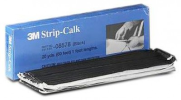Rob58
Pre-takeoff checklist
- Joined
- Feb 20, 2016
- Messages
- 369
- Display Name
Display name:
Rob
No doubt there are dozens of sealant/adhesives out there, but some must be better than others. I want to install some side windows. Looking for a material that will handle the bonding task but will also allow me to form a nice tapered border to smooth out the step between the aircraft skin and the acrylic window. Finding something that can be troweled to look clean seems to be a bit elusive. Anyone have a recommendation that has worked out well? TIA


